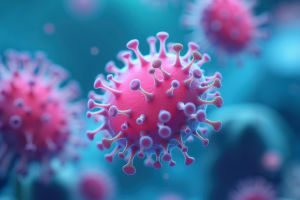Hello Lykkers! Have you ever released a balloon into the sky and felt that joy as it soared? While balloons might seem like a harmless part of celebrations, they can actually pose a significant environmental threat.
In many places around the world, cities are increasingly banning balloons to combat pollution and protect wildlife. Let’s dive into the growing movement against balloon pollution and explore how this simple item can have a far-reaching impact.
The Harmful Impact of Balloons
What Happens After Balloons Are Released?
Balloons, whether made from latex or plastic, are often non-biodegradable. After they are released into the sky, they can end up on the ground, tangled in tree branches, or, more dangerously, floating into oceans.
In the water, marine life such as fish, sea turtles, and dolphins can mistake them for food, leading to suffocation or entanglement. Additionally, the strings or ribbons tied to balloons can pose a similar risk to animals that might get caught in them.
The Environmental Consequences
The decomposition of balloons takes years. In the ocean, latex can persist for up to four years, while plastic balloons can last even longer, creating an ongoing threat to wildlife and contributing to plastic pollution.
The balloon’s presence in the environment leads to the accumulation of waste, especially on beaches, rivers, and other water bodies. According to a report by the Marine Conservation Society, balloon debris found on British beaches increased by 53% from 2015 to 2016, with a significant rise in the number of helium balloons.
Global Efforts to Ban Balloons
The harmful effects of balloons have prompted many cities worldwide to introduce bans. In the United States, Rhode Island was one of the latest places to implement a ban on helium balloons.
The local authorities imposed a hefty fine of \$200 for anyone caught releasing or selling helium balloons, following disturbing reports of animals being injured by balloon-related pollution. Similar bans are already in place in other cities like Provincetown and Nantucket in Massachusetts, parts of Florida, and California.
Australia has also joined the effort, with several cities around Melbourne adopting similar measures. In Canada, Vancouver parks are now off-limits for balloons to help protect the environment.
In Italy, Maruggio, a small town in the province of Taranto, became the first municipality to take action against balloon pollution. After discovering a sea turtle nest along its coastline, local authorities decided to ban balloon releases as part of their efforts to protect marine life. This initiative was part of the “Clean Sea Life” project, which aims to safeguard the delicate ecosystems of the sea.
The Role of Citizens in Fighting Plastic Pollution
Increasing Awareness
The fight against balloon pollution is just one piece of the broader effort to reduce plastic waste.
Over 8 million tons of plastic enter the oceans every year, and while banning balloons may seem like a small step, it is a critical one in raising awareness about the impact of single-use plastic items. Governments and environmental organizations continue to focus on reducing plastic consumption by encouraging alternatives to products that harm the environment.
Other Bans and Reductions
In the United Kingdom, for example, the government banned plastic straws, stirrers, and cotton swabs in 2019. In Italy, disposable plastic bags for fruits and vegetables were banned at the start of the year, and similar efforts are being made globally to reduce the use of plastic. Soon, products like non-biodegradable cotton swabs and personal care items with microplastics will also be banned.
These efforts are paving the way for an even greater global push to reduce the use of plastic bottles and other harmful materials in the coming years.
Conclusion: The Power of Small Changes
By implementing bans on balloons, cities and countries are helping to combat the growing problem of plastic pollution. These actions serve as reminders that small changes, like avoiding balloon releases, can contribute to a larger global effort.
As more regions join the movement, the hope is that people will become more aware of the long-lasting effects of plastic on our planet and take steps to reduce waste in their own lives. Let’s all do our part in making the world a cleaner, safer place for future generations!


